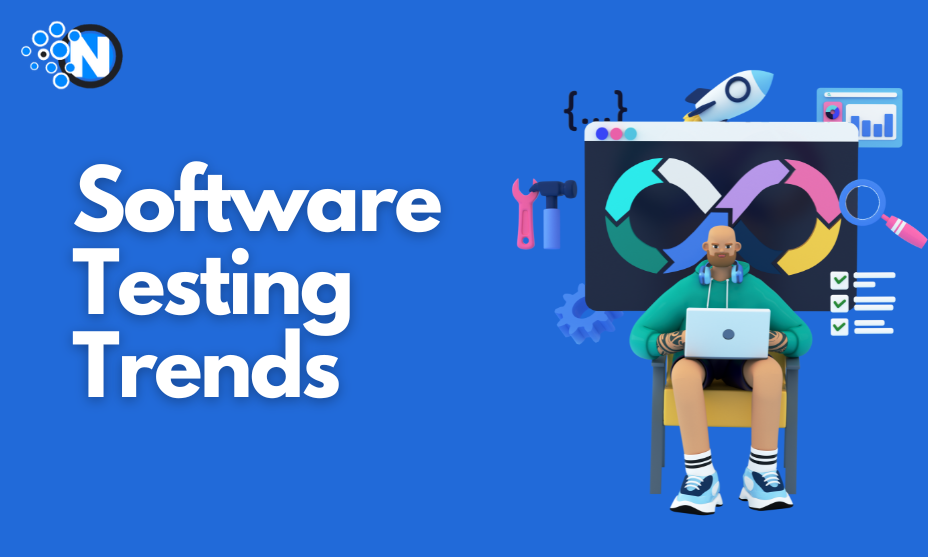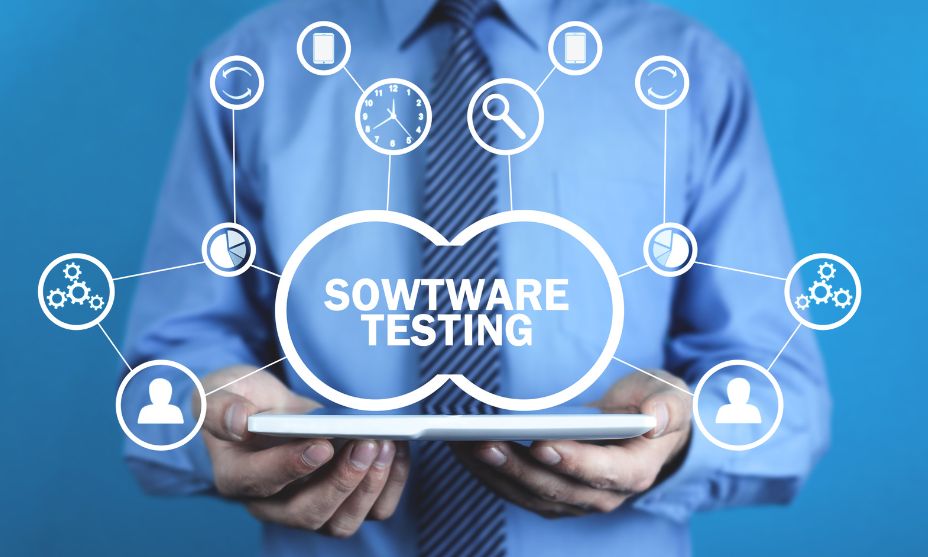Latest Software Testing Trends: Unlocking Success

In this digital age, the stakes are higher than ever, and the consequences of software failures can be catastrophic. Thus, embracing and adapting to the latest trends in software testing becomes a matter of not just professional responsibility, but a matter of survival. However, the landscape of software testing is not static. It evolves rapidly, adapting to the rising needs and requirements of the clients.
This article will guide you through the world of software testing, helping you to explore the cutting-edge trends that are shaping the future of quality assurance and test automation services. From AI-powered testing to cybersecurity issues and beyond, let’s embark on a journey through the exciting and transformative landscape of software testing trends.
Software Testing Trend 1: AI-Powered Testing
AI-driven test automation tools can uncover defects, identify patterns and simulate user interactions faster than any human. Such an approach leads to improved efficiency, faster release cycles, and reduced testing costs of the digital solutions.
However, the integration of AI in testing doesn’t come without its share of skepticism and apprehension. Companies often grapple with the question of whether AI can be wholly trusted to catch all the bugs and make critical decisions about the software’s fate. While AI has proven to be a formidable ally in testing, it’s essential to strike a balance between the power of automation and human expertise. Human testers bring creativity, intuition, and domain knowledge to the testing process, complementing the speed and efficiency of AI.
AI and human testers form a perfect partnership that accelerates testing and ensures comprehensive coverage, increased test accuracy, and the agility to adapt to evolving software and user requirements.
Software Testing Trend 2: API Testing
As software ecosystems become increasingly complex and interconnected, the value of API testing grows. APIs are everywhere. They power the apps we use, the websites we visit, and the businesses we rely on. Without APIs, the modern world would not function.
Read Also: Why Exploratory Testing Is Important In Agile Projects? Top Reasons
APIs are the glue that binds software ecosystems together, allowing applications to communicate with each other and exchange data. They ensure the functionality, reliability and security of digital solutions.
Consider the common scenario of using a food delivery app. When you search for a nearby restaurant and check its menu, you’re actually engaging with APIs behind the scenes. APIs deliver restaurant information, menu items, and reviews to your screen, ensuring a smooth user experience. Imagine if any of the APIs involved in this process were not properly tested. You might place an order and it never arrives because the API between the app and the restaurant’s kitchen failed. In the worst-case scenario, a security vulnerability in an API could be exploited to steal your personal information or financial data.
So, API testing is not just a trend, it’s a necessity. In the future, businesses that don’t invest in API testing will be at a serious disadvantage.

Software Testing Trend 3: Low-Code and No-Code Testing
Nontechnical stakeholders can actively participate in the testing process thanks to the appearance of no-code and low-code testing tools. For example, a product manager can use a no-code testing platform to check and validate the functionality of a mobile app, ensuring its correspondence to the requirements of the project. Moreover, the usage of the low-code and no-code tools allows to speed up the processes.
So, a tester just needs to drag drop elements from a web application, record steps visually and write no code to develop automated test scripts. This pattern of evolution will persist into the future. With advancements in low-code testing tools and continued improvements for usability, we’ll increasingly see them being used both by testers and non-technical users across organizations.
Software Testing Trend 4: Cybersecurity Testing
According to statistics of a recent report by Gartner, the global cloud security market is expected to reach $16.4 billion by the end of 2023. No wonder, since privacy and security of sensitive data are the foremost prioriorities of the organizations who value their clients. Cybersecurity testing ensures that robust defenses are in place, proactively identifying and addressing vulnerabilities and flaws. It’s not just a trend, it’s an essential protection, upholding trust, regulatory compliance, and the reputation of organizations.
Cybersecurity is always trendy and always popular. Consider the following example. There are two companies, Company X and Company Y, both operating in the same industry. Company X prioritizes cybersecurity, regularly updating its systems and investing in employee training. In contrast, Company Y views cybersecurity as an afterthought, opting for cost-saving measures. One day, both companies face a cyberattack. With its robust security measures, Company X quickly detects and manages the attack, ensuring minimal data loss and downtime. Company Y, lacking adequate protection, suffers a devastating breach, losing sensitive customer data and facing severe financial and reputational damage. Of course, you can hope to be lucky and not to be attacked by hackers. However, according to Ponemon Institute, 70% of organizations have experienced a data breach in the past year. So, sooner or later, such situation is very likely to happen. So, it’s better to be ready and to invest timely into the cybersecurity.
Conclusion
All in all, following the software testing trends isn’t just a strategic choice, it’s a matter of survival. It means being agile and flexible enough to adapt to the new methodologies, approaches and conditions.
Remember that software is full of unexpected surprises, much like life itself. When you think you’ve figured it all out, a new trend emerges. But fear not, as for each trend, we gain new tools, approaches and insights to tackle the challenges that lie ahead. Still, mentioned trends are not just passing fads, they are the building blocks of a more robust, secure, and innovative software ecosystem. By embracing these trends and staying agile in our testing practices, we can ensure that software continues to be functional and efficient, while minimizing the risks associated with its deployment.



